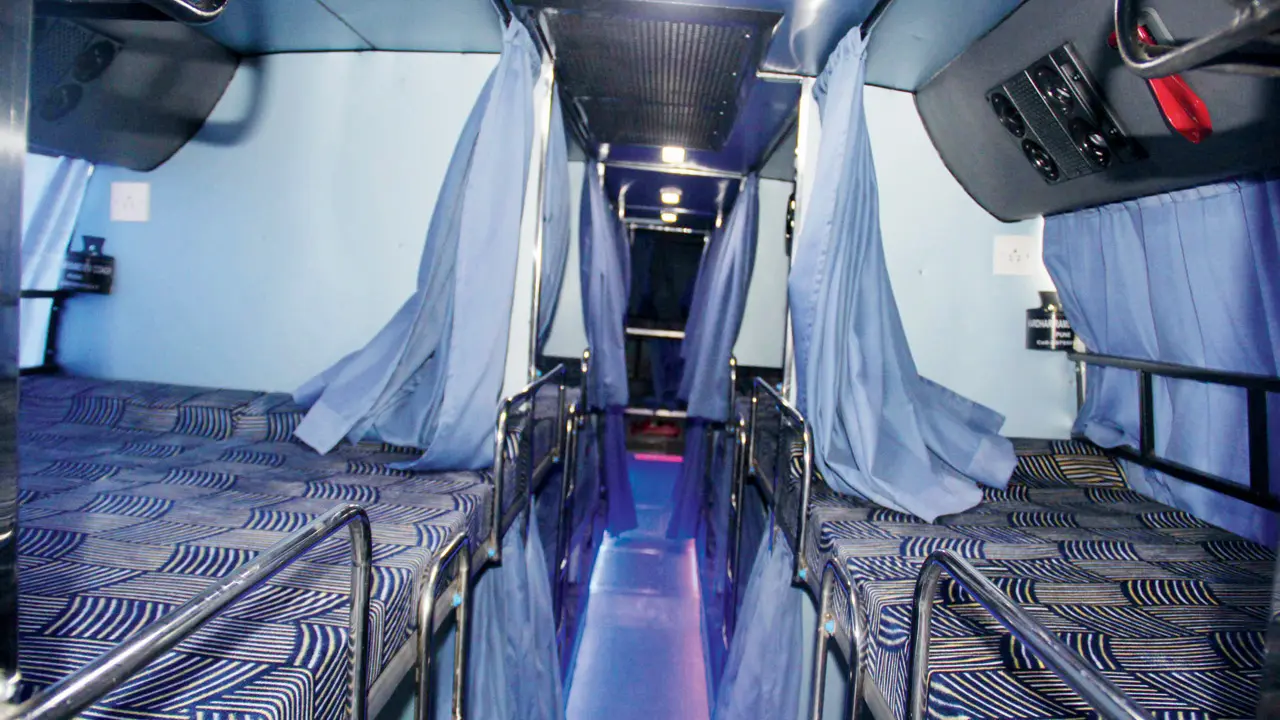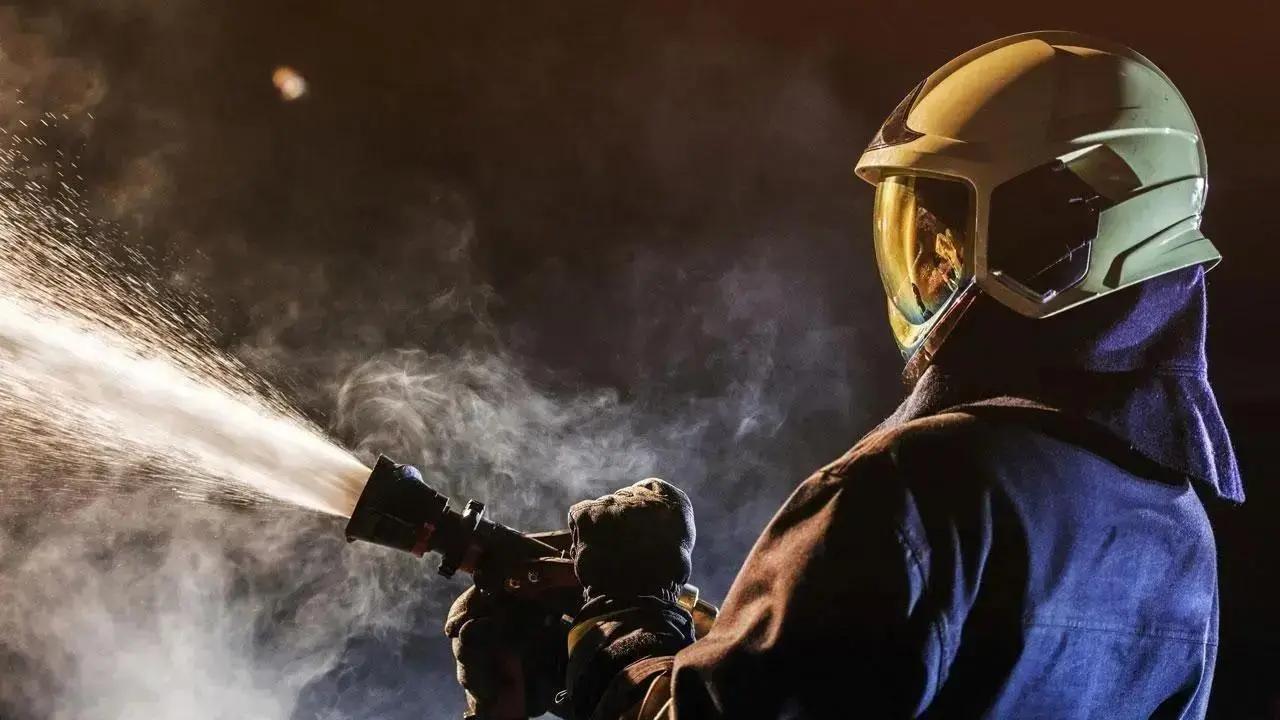The next time you board a sleeper bus, you’ll witness a safety briefing on the emergency entry/exit points and evacuation routes just like the cabin crew do on flights before take-off. This is among a slew of safety measures the Maharashtra State Road Transport Corporation (MSRTC) launched on Saturday in the wake of the tragic bus accident and resulting fire that killed 19 passengers in Kurnool, Andhra Pradesh, on Friday.
The bus had gone up in flames after it hit a motorcycle, said police. Most of the passengers were asleep. Quick thinking helped about 20 people escape the blaze after they smashed the emergency window and jumped out. This is the second such mishap in the past fortnight, including a similar bus crash in Rajasthan that claimed 21 lives on October 15. It has once again raised concerns over intercity sleeper buses turning into death traps.
The MSRTC started its own sleeper bus service in 2019
Transport Minister and MSRTC chairman Pratap Sarnaik said the state’s road transport body has launched the safety campaign to prevent such tragedies and raise safety awareness among commuters. “Sleeper buses offer comfort, but ignoring safety rules can turn them into death traps,” Sarnaik said. “An alert passenger is the key to a safe journey.”
But how do travellers stay alert? The campaign asks passengers to keep a lookout for important markers during their journey — if they see smoke, smell anything burning, or notice overheating at electrical points, the crew must be notified. MSRTC bus staff will conduct safety drills to show passengers how to suppress flames by removing oxygen, heat, and fuel by covering small fires with a blanket or cloth. The campaign will also include awareness posters, social media drives, and announcements across major bus stations.
Officials said special attention will be given to night journeys, when most sleeper bus fires occur. A stricter policy of not carrying flammable materials or fireworks inside buses will also be implemented. Transport observers said similar safety drills and audits should also be made mandatory for private luxury buses, which often have sealed exits and poor compliance with fire norms.
What to look out for
Main Door: Must always remain open and obstruction-free
Emergency Exit Door: Should never be blocked with luggage
Roof Escape Hatch: Usually two or three per bus — to be used in emergencies
Emergency Hammer: Located beside windows for breaking glass and exiting











